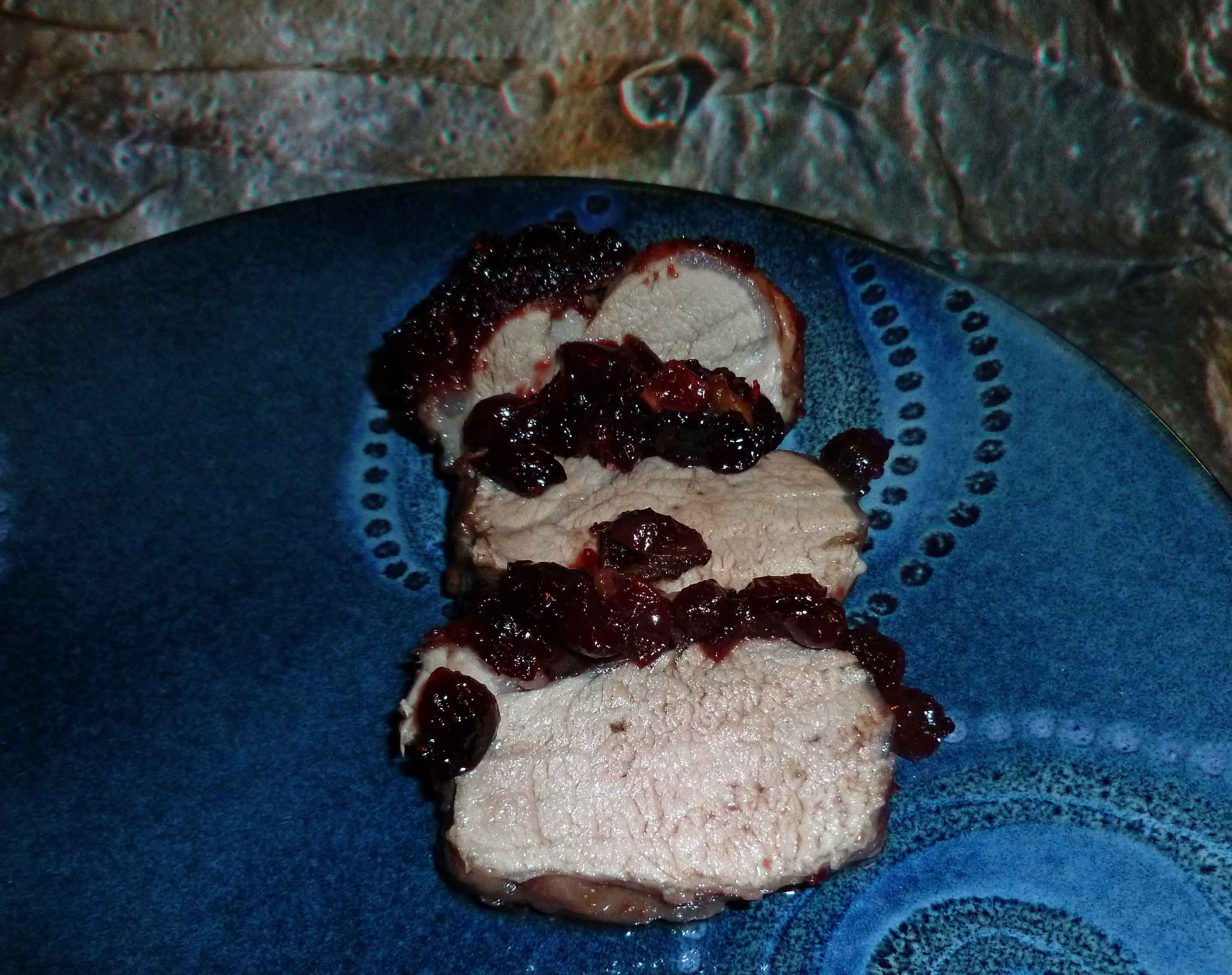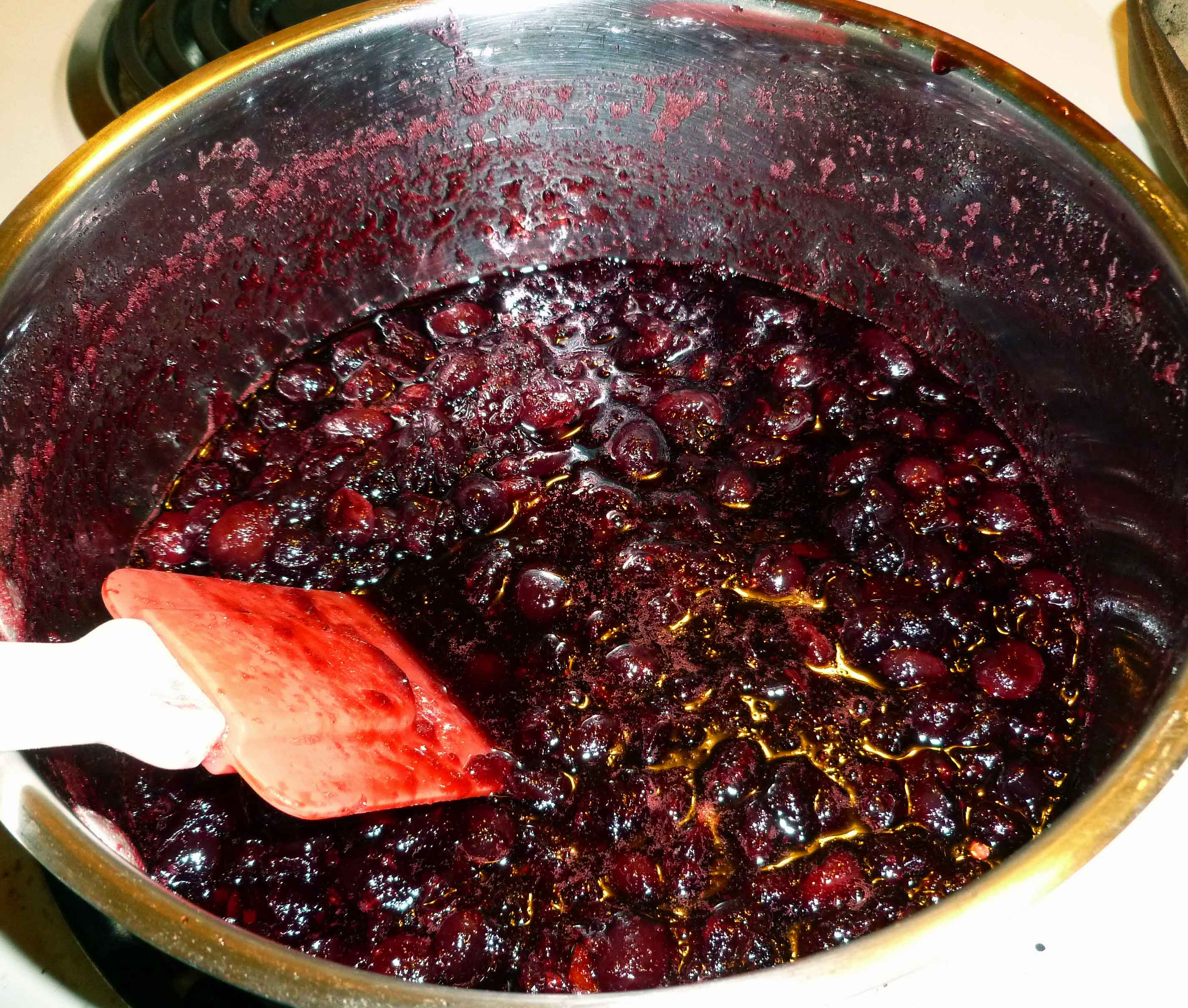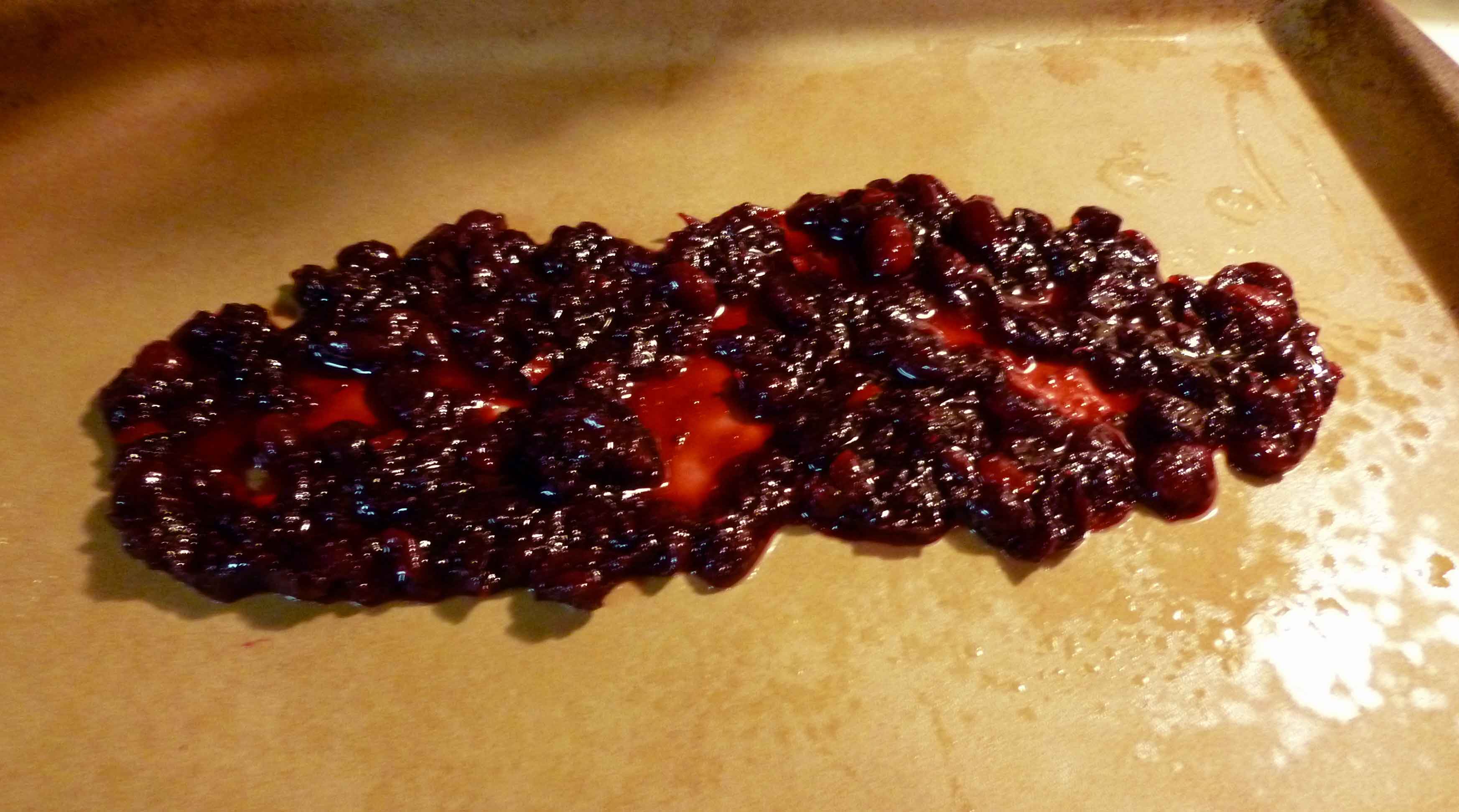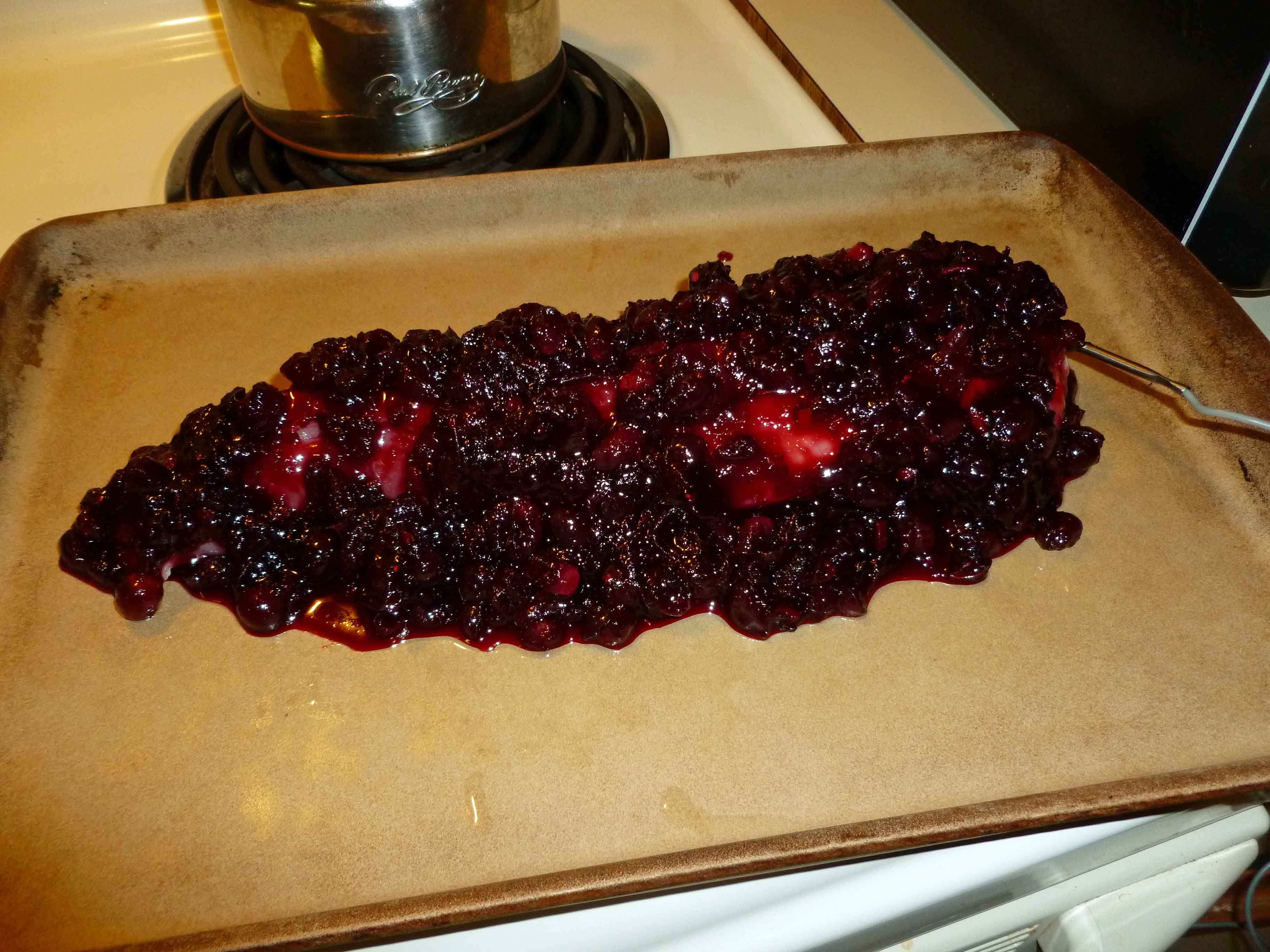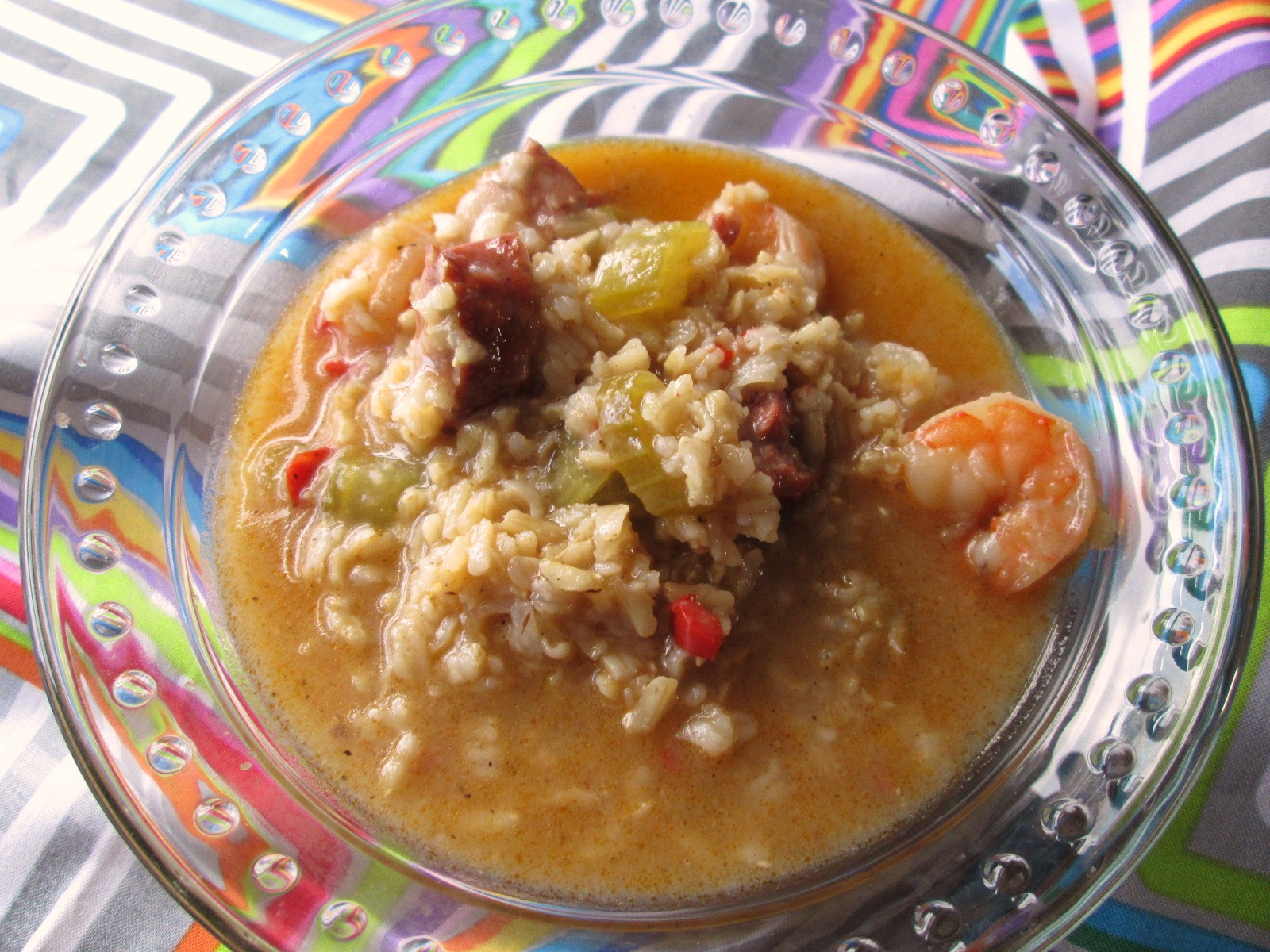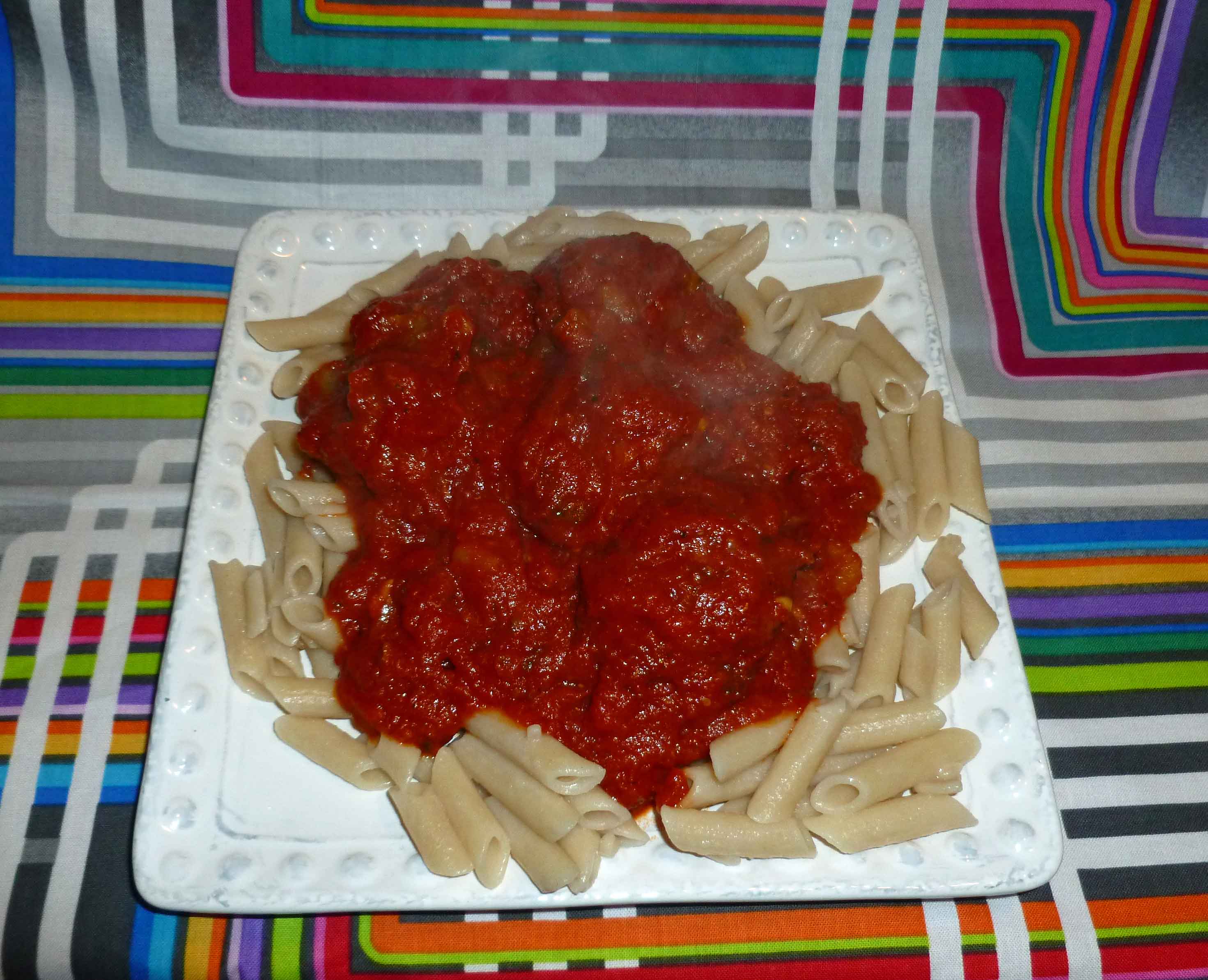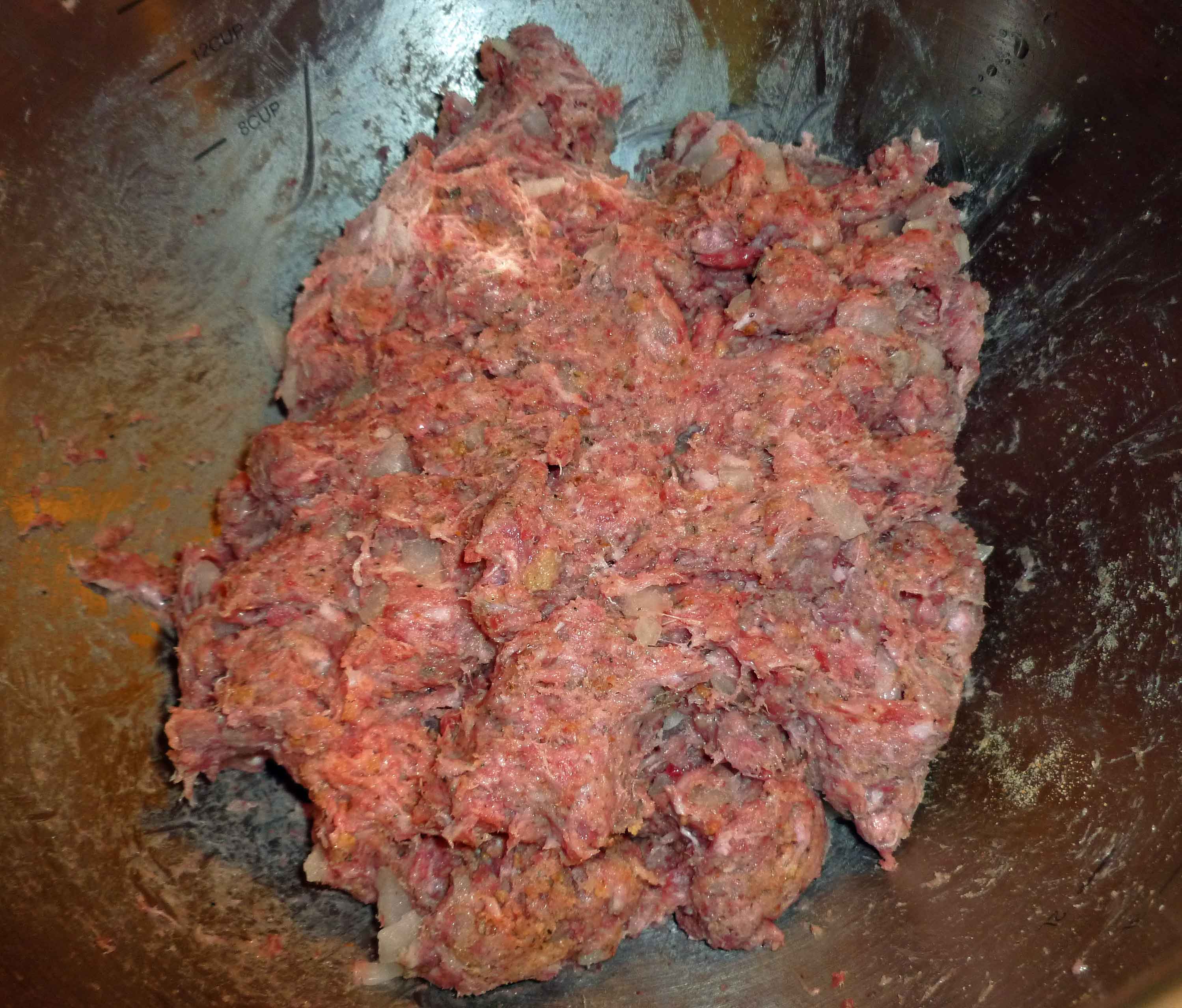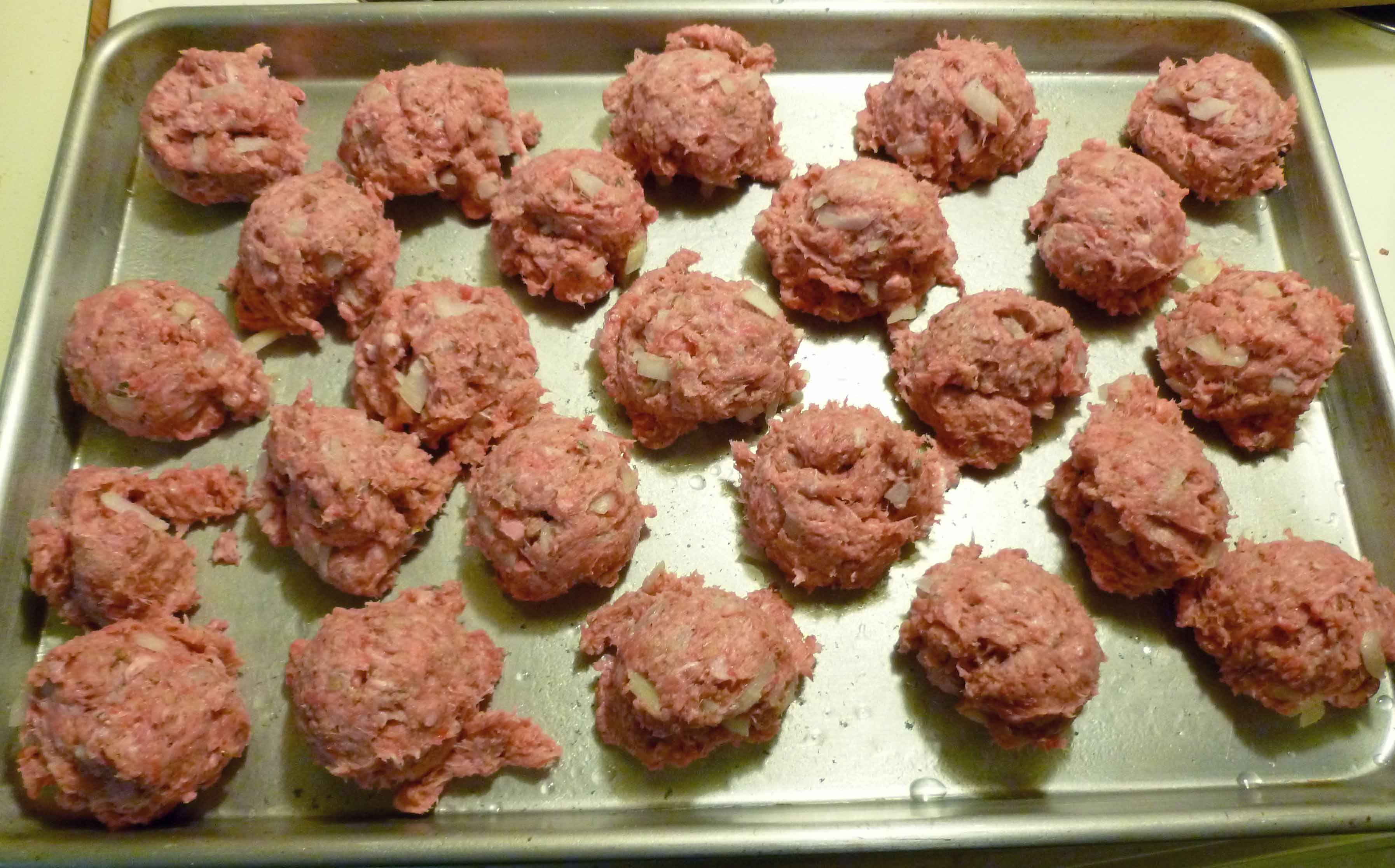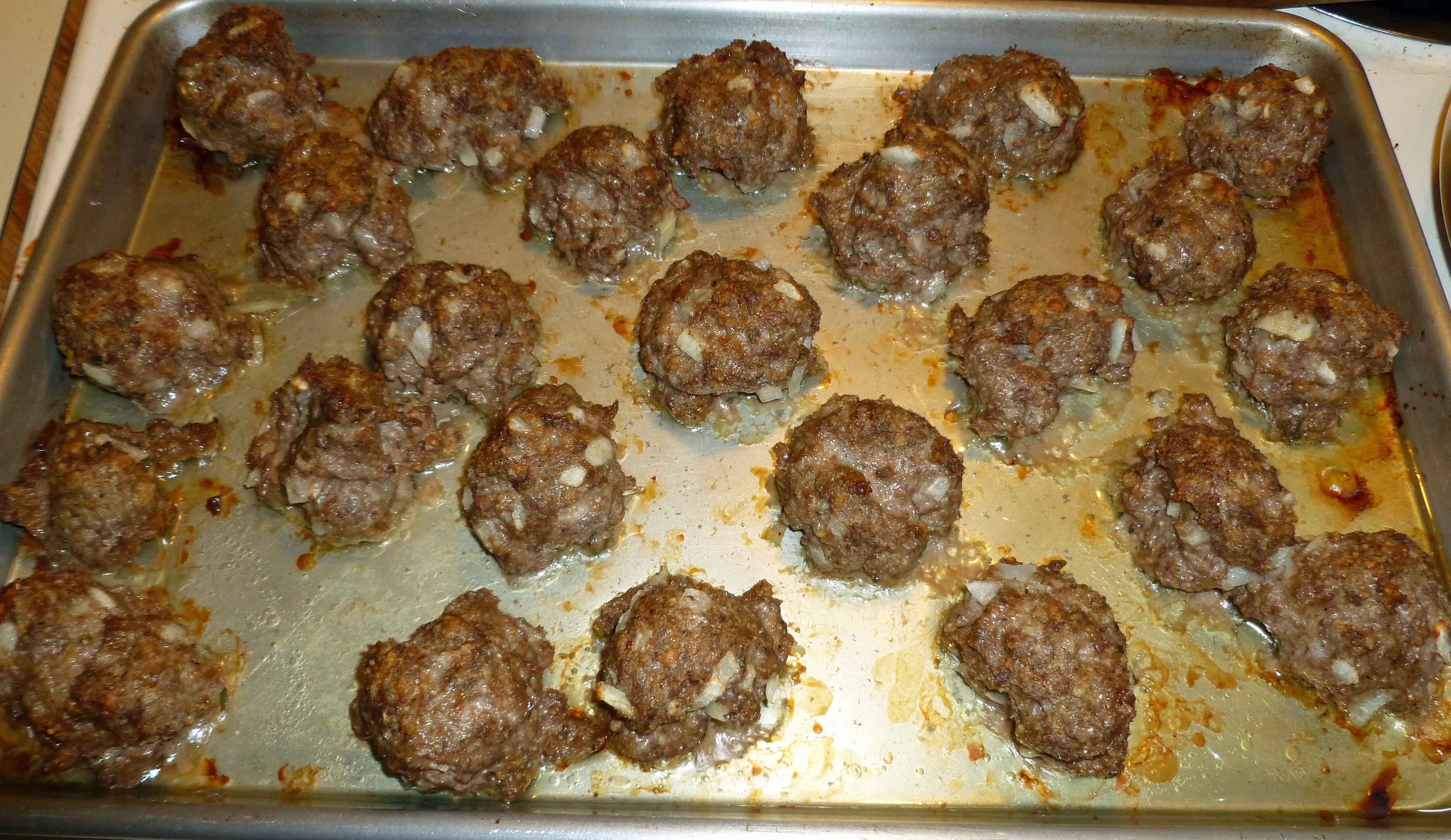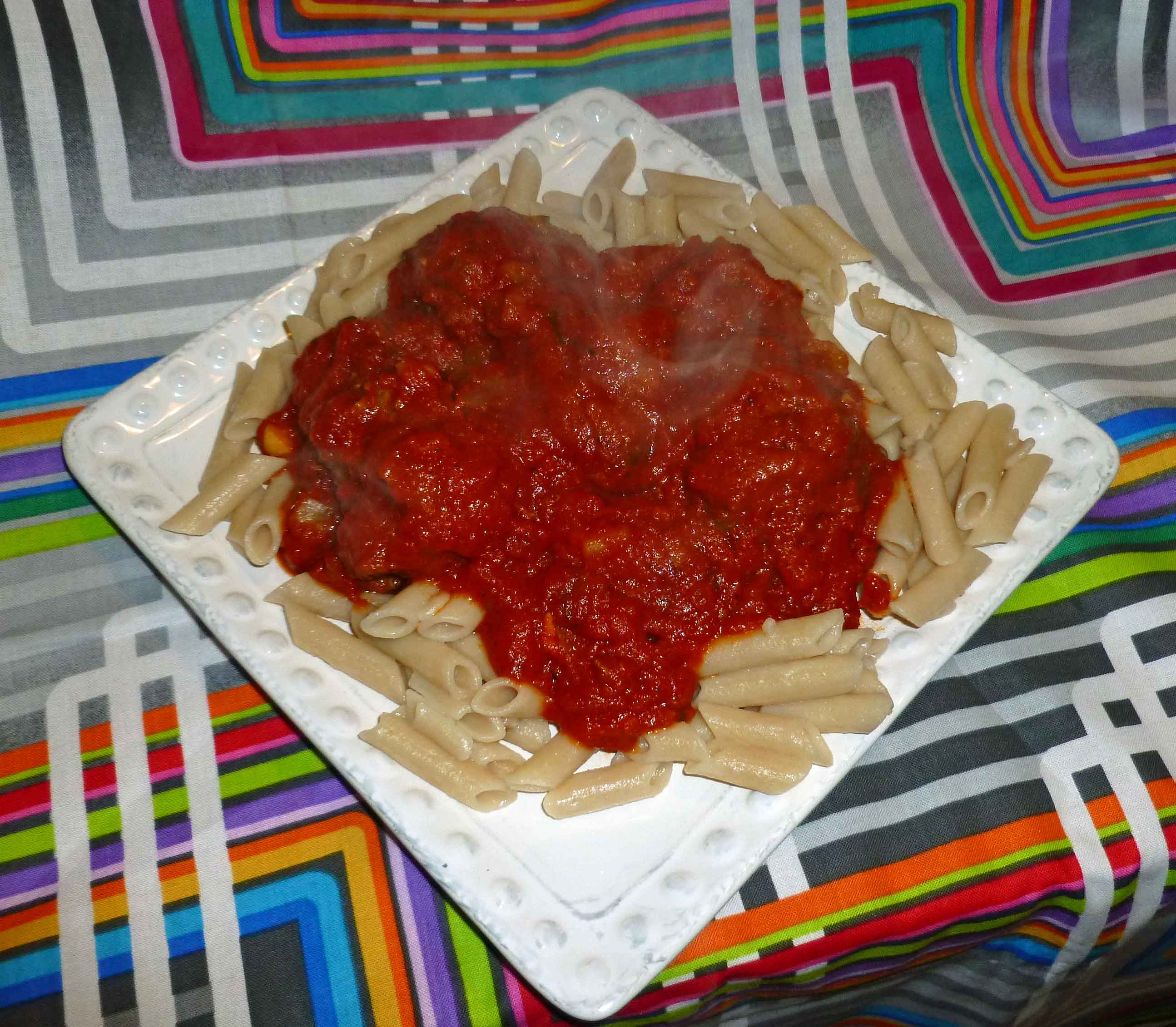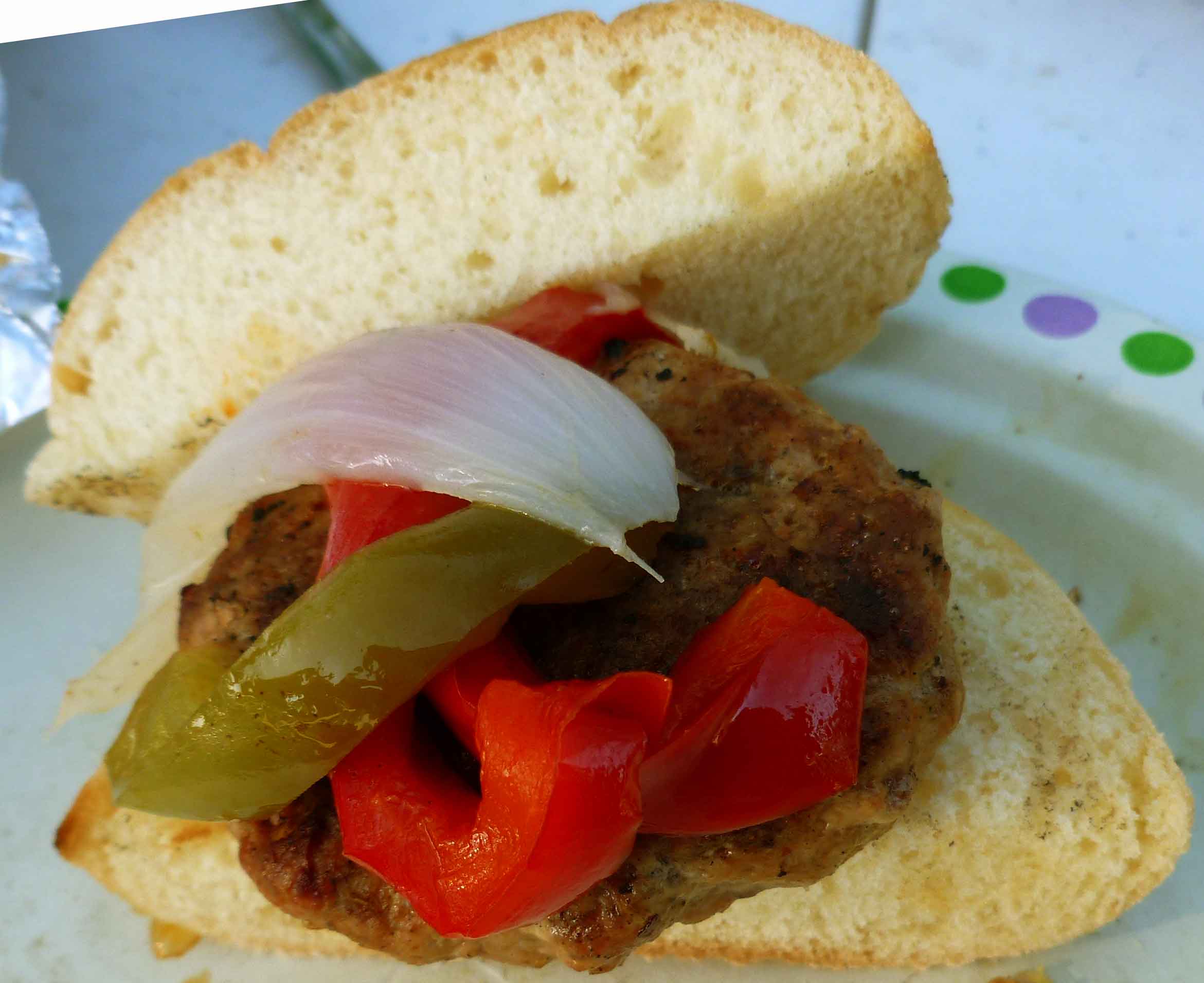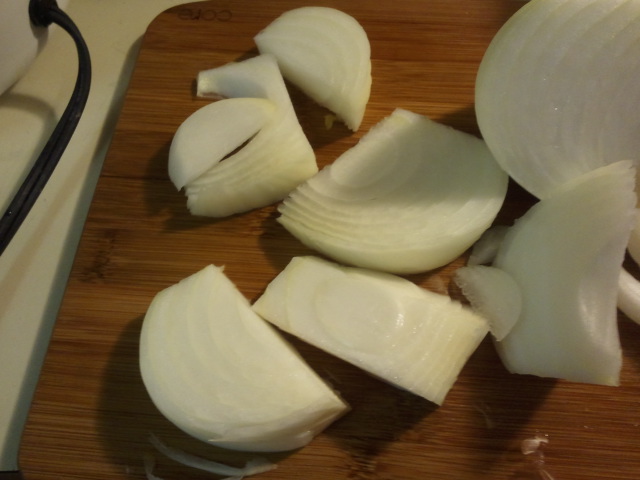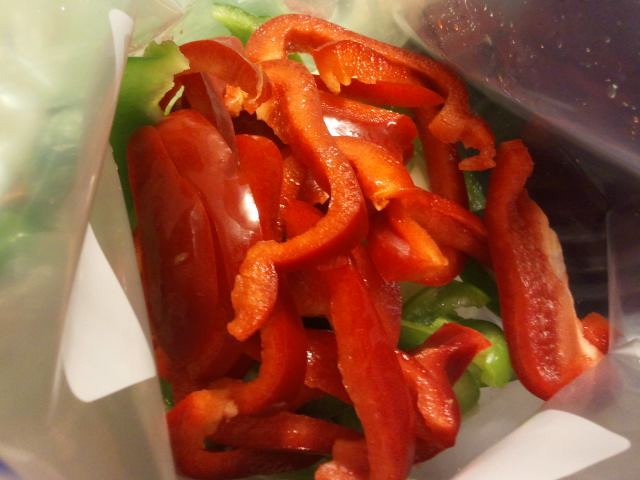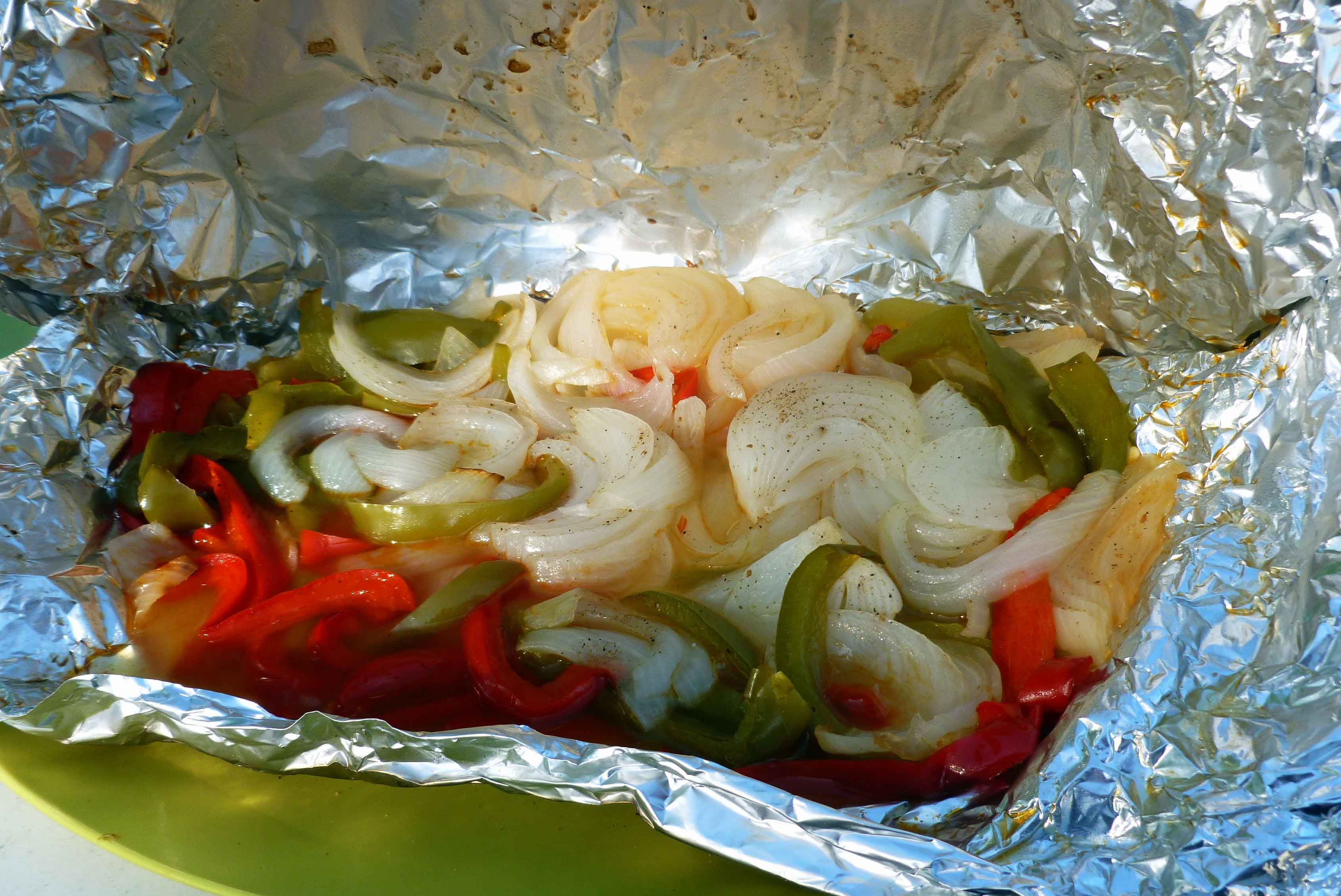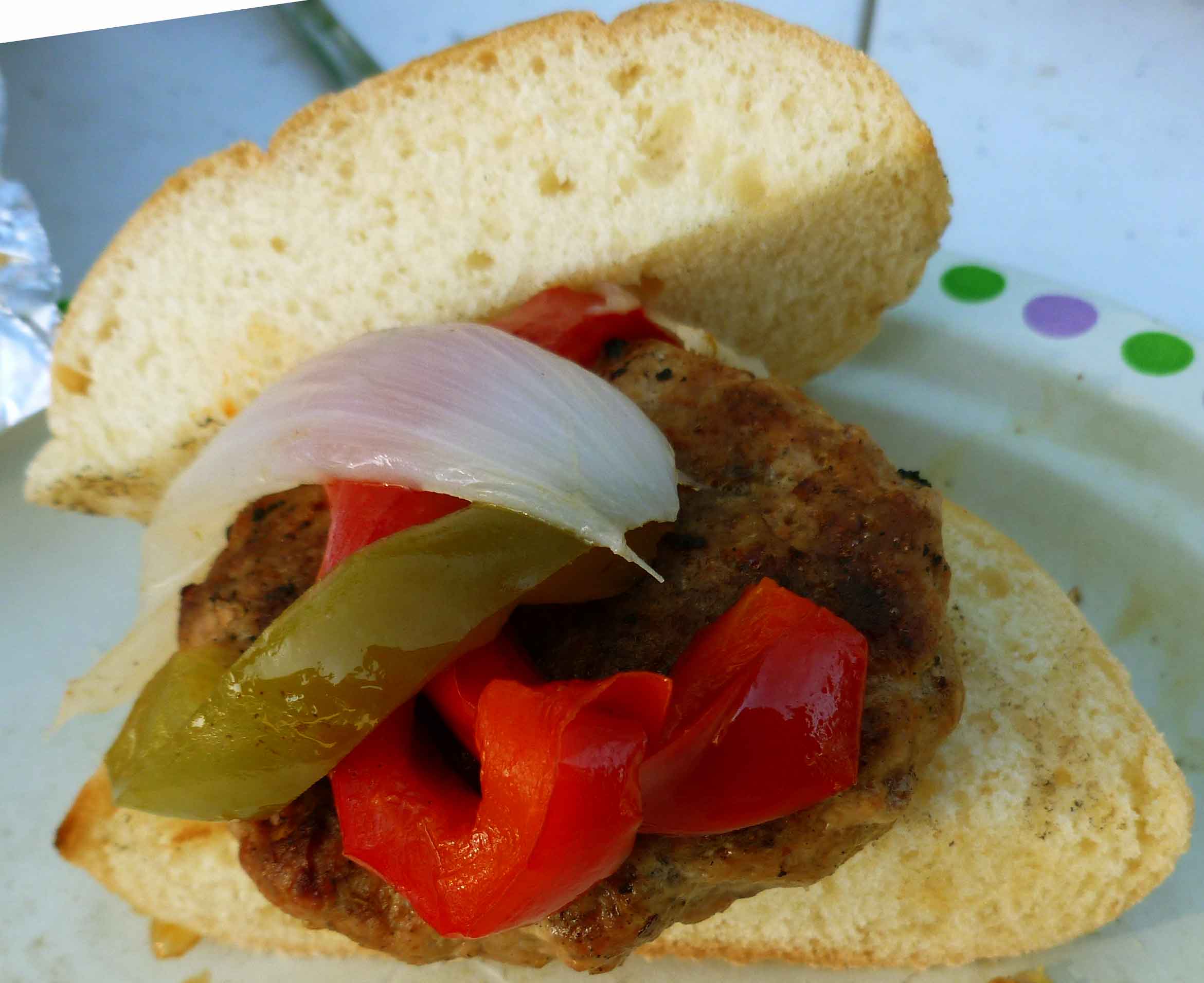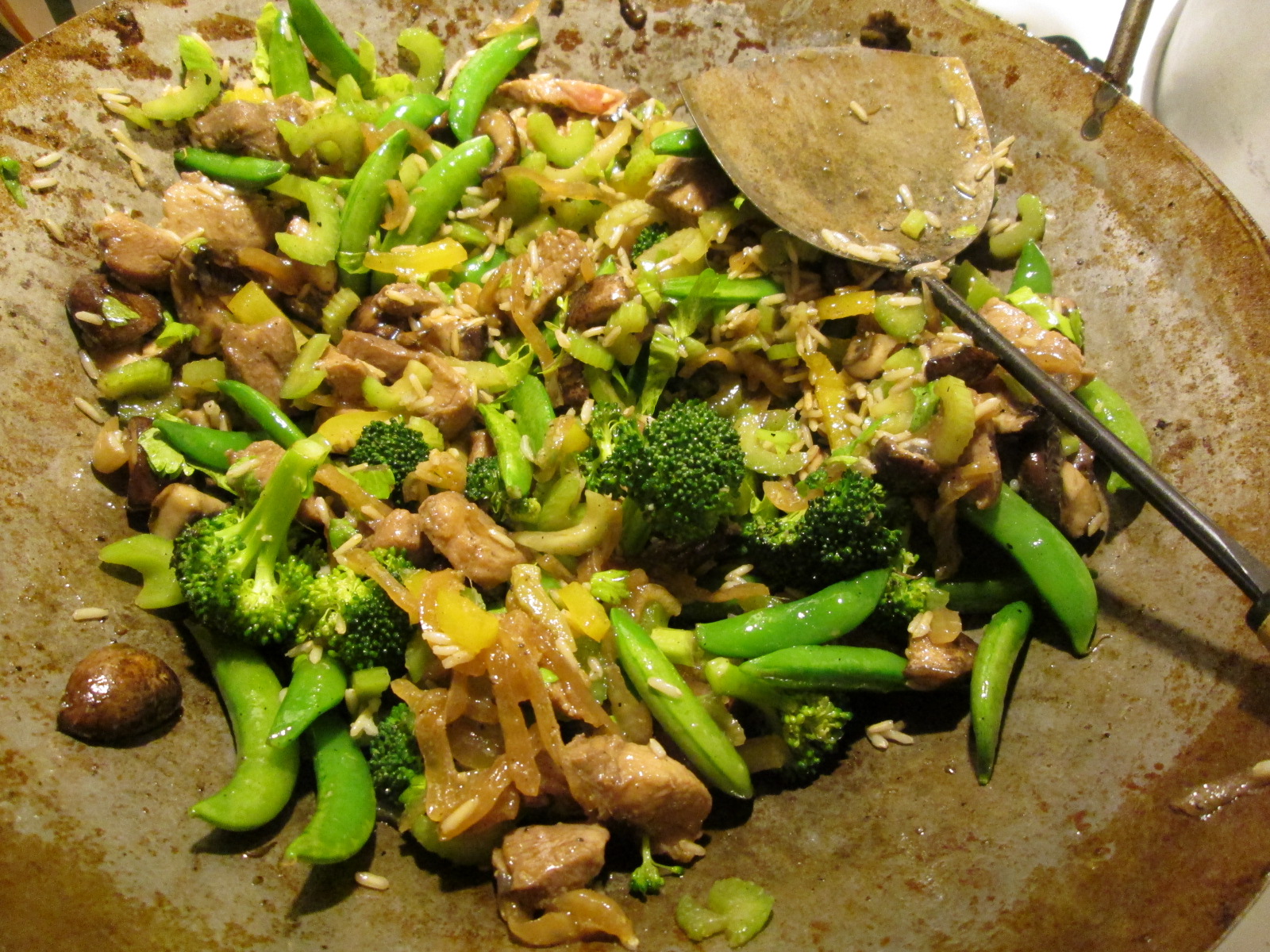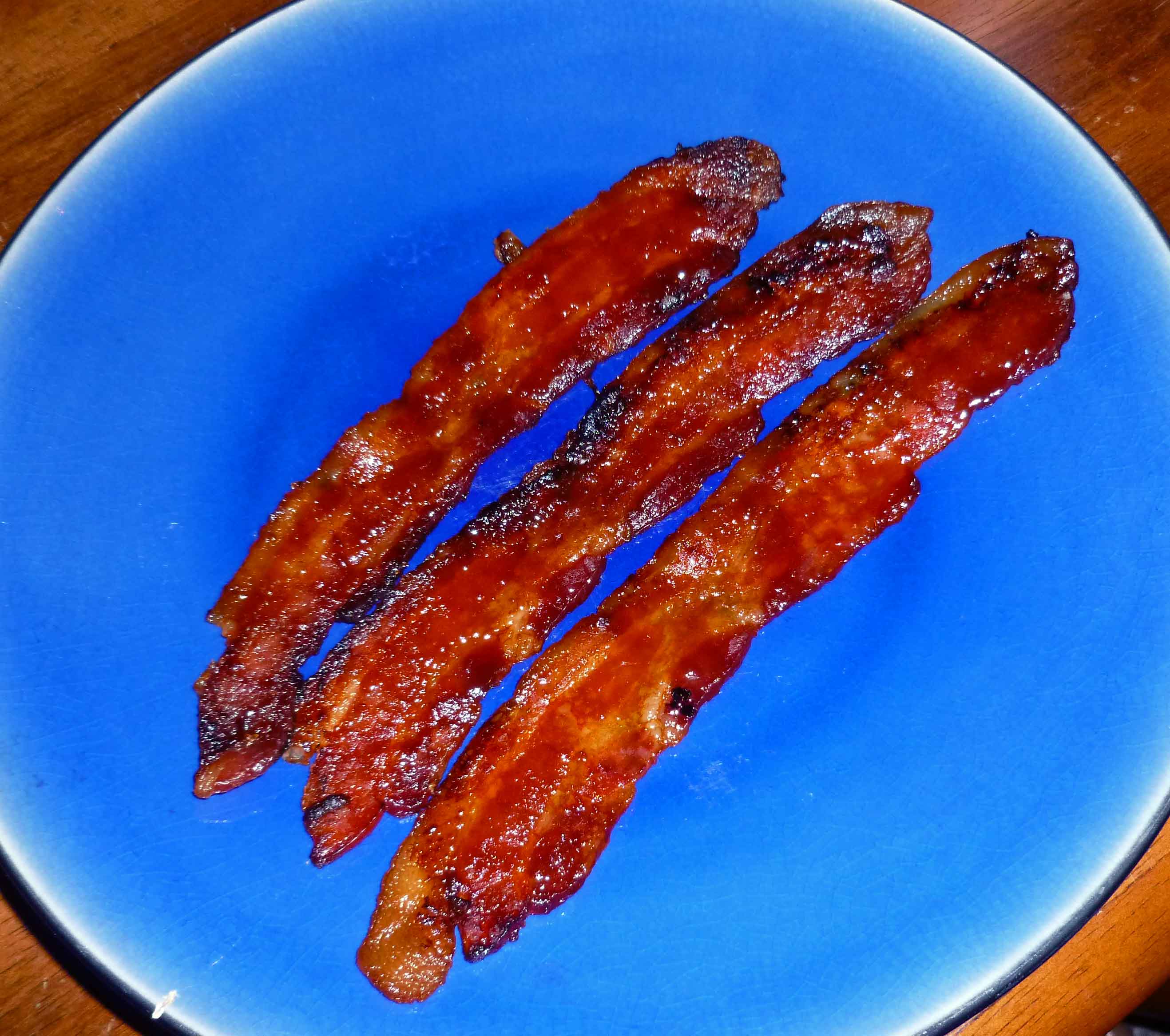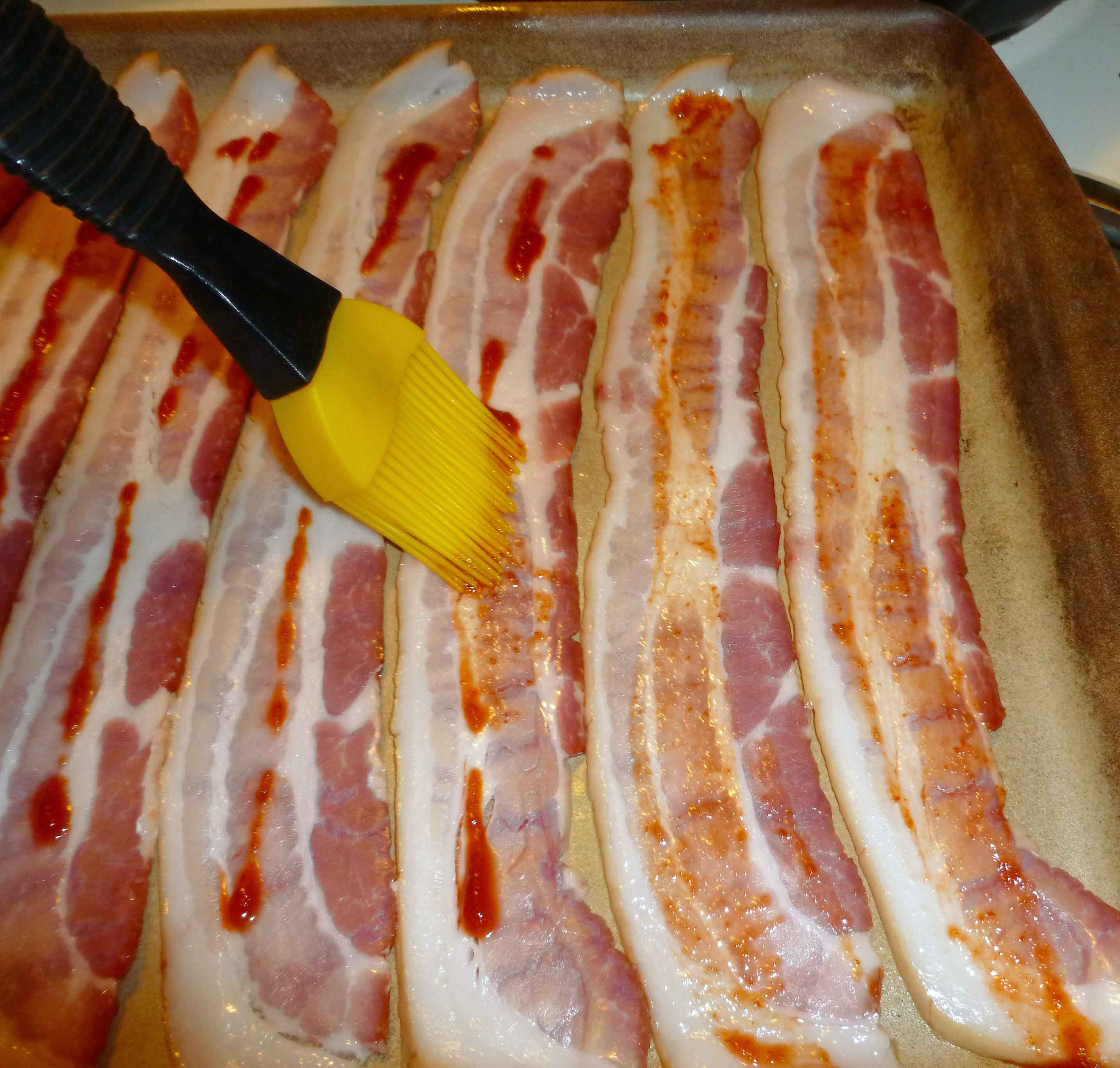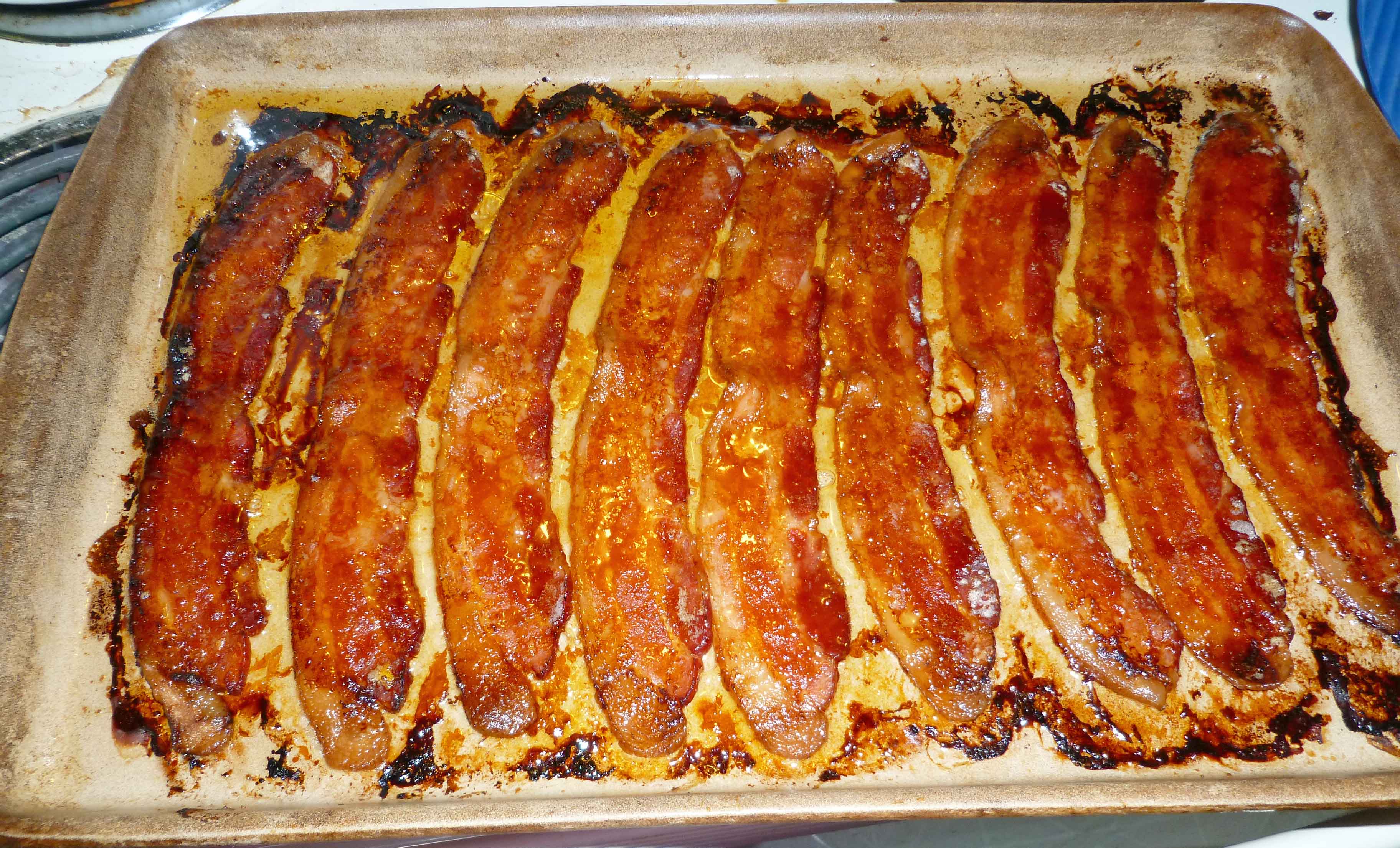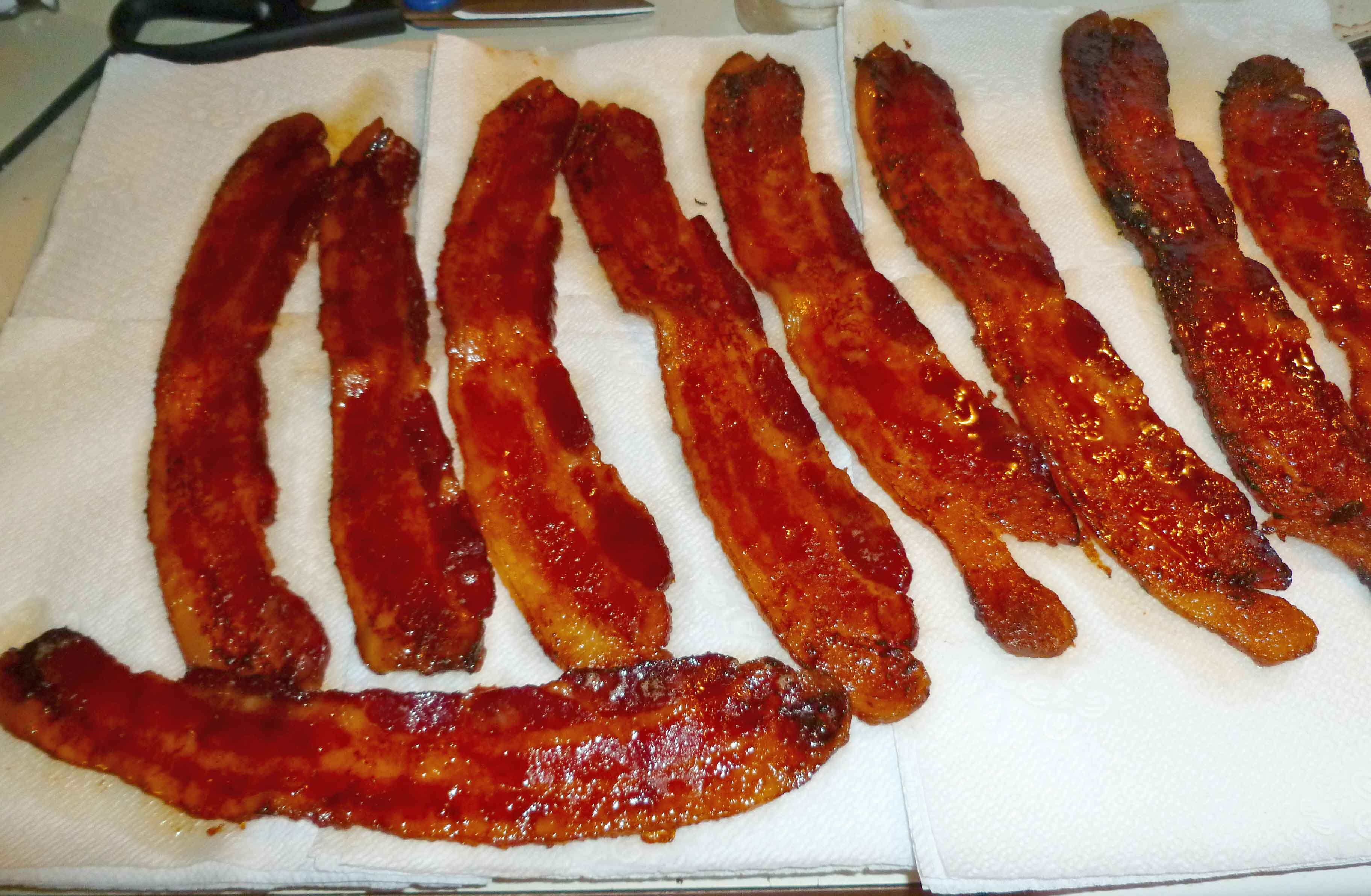
Bacon. It’s bacon, how do you live without bacon? Unfortunately, commercial bacon has dextrose, sodium erythorbate, ascorbates, and other corn ingredients. At the beginning of my corn-free life, I would cheat a bit, but then I would get a blister on my foot a couple days later, and I eventually decided that it had to go. So no bacon. For months and months. And then I started Googling how to make bacon, and looking for pins on Pinterest. It didn’t look that hard. And compared to fermenting (which I very much enjoy, so this is not a slam), it seemed much less evil scientist-bubbling concoctions, and more of a dry rub marinade in the fridge for several days longer than you would normally. What was the worst that could happen? I mean, besides making myself sick, and that was going to happen if I ate commercial bacon anyway. But I still didn’t do it because I was going to have to make a special effort to get some pork belly, and it’s not like I don’t have enough other stuff to do. But one day, Mary Kate and I were dubbing around at the Saigon Market in Nashua and we saw some pork belly all packaged up and ready to bring home. So I bought it, and I made some bacon. It was good, but I thought the recipe needed some tweaking. So I called McKinnons in Salem and ordered five pounds of pork belly. And I then played around some more.
Now that I’m done experimenting, I’ve got two versions to share with you, one that’s a more basic cure, and one that’s a bit more savory. I like them both, but I prefer the basic cure, as I tend to be a traditionalist about my bacon.
In all likelihood, you are going to special order the fresh pork belly. Some grocery stores may be cooperative, or you might have to go to a specialty butcher store.
Making Bacon (two versions)
- 2 lbs of pork belly, skin removed
- 3 tablespoons sea salt
- 3 tablespoons brown sugar
For a basic cure, you will add:
- 2 teaspoons whole peppercorns
For a more savory cure, you will add:
- 2 teaspoons whole peppercorns
- 1 garlic clove, minced
- 1 tsp rosemary
- 1 tsp celery seed
- 1 tsp dried thyme
- 2 bay leaves
Put the salt, brown sugar, and the spices for your choice of cure in a blender or food processor, with the exception of the garlic clove in the savory cure. Blend or process until the peppercorns are well ground. If you’re using the savory cure, mince the garlic clove and set it aside.
If your pork belly still has the skin on it, as shown below, you will need to remove it. (The picture below shows five pounds of pork belly. I used it to make approximately two pounds of each bacon cure and one pound of salt pork, the recipe for which will be posted in the not too distant future.)

Using a very sharp knife, remove the skin cutting it as thinly as you can manage. You don’t want to waste any of the pork belly.

Once you have trimmed off the skin, your pork belly will look like the picture below:

Rinse the pork belly in very cold water and pat it dry with a paper towel. If you are doing the savory cure, now is the time to mix your ground salt, sugar and spice mixture in a bowl with the minced garlic. Spread half your salt, sugar, and spice mixture on a large piece of parchment paper, a large casserole dish, or a sheet pan, whatever you have in your kitchen that’s large enough to accommodate your piece of pork belly. Place the pork belly into the salt, sugar and spice mixture, and pour the remaining mixture over the top of the pork belly. Rub the mixture all over the pork, making sure to get every inch covered.
Put the pork belly in a 1 gallon resealable plastic bag, and add any of the excess salt, sugar, and spice mixture from your parchment paper, casserole dish, or sheet pan to the bag. Close the bag and shake it up to evenly distribute and coat the pork belly with the mixture. After shaking, try to remove as much of the air from the resealable plastic bag as you can so that the spice mixture stays on the pork belly and reseal it.

Place the bag on a plate, tray or small sheet pan so that it can be placed in your refrigerator and stay level. Refrigerate for five to seven days, flipping the bag once a day, until the pork feels firm throughout. The longer you let the pork belly cure, the saltier it will be. I preferred a cure of five days.
When the pork belly is finished curing, remove the pork belly from the resealable plastic bag and wash off the salt, sugar and spice mixture thoroughly under cold water. Pat your pork belly dry with paper towels.
You now have a choice to make. You can slice the bacon as is and then cook it, which appears to be the closest to commercial bacon, and was often referred to as “green bacon” in recipes I saw. Or you can smoke or roast the bacon. I don’t have a smoker, so I’ve not tried smoking it. I did do one batch of the roasted bacon, but I think I prefer the green bacon.
Green bacon:
We got a meat slicer as a wedding gift because my husband really wanted one, so it went on the registry. It was really helpful in slicing the green bacon.

I fried some in my cast iron skillet over medium heat, as you would normally cook bacon. The home cured bacon seems to take longer than commercial bacon to cook.

Which results in yummy looking bacon:

Or you can use the oven method to cook your bacon, and you get yummy bacon too:

Roasting the Bacon: When your bacon has cured, and you’ve rinsed and patted it dry with paper towels, pre-heat your oven to 200°F. Place the bacon in a 9 x 13″ roasting pan and roast until you’ve reached an internal temperature of 150°F. This will take between an hour and a half and two hours.

You don’t want to cook the meat, so once it reaches 150°F, remove the bacon from the oven. Let the bacon cool to room temperature.
Once your bacon has been roasted or smoked and has cooled, wrap it up in parchment paper and put it in the refrigerator until it has completely chilled. Once chilled, you can slice it and fry it up or use the oven method to cook your bacon. In the picture below, I used a chef’s knife and my knife skills aren’t all that great so the slices are a bit thicker than I would have liked. Which is why I decided to drag out the meat slicer in later experiments.

We cooked the bacon two ways here too, frying it and using the oven method.

Smoking the Bacon: Again, I have not tried this because I don’t have a smoker, but one of the recipes I found gives the following directions. When your bacon has cured, and you’ve rinsed and patted it dry with paper towels, smoke it over hickory or apple wood at a very low temperature until bacon reaches an internal temperature of 150°F or about three hours. Let bacon cool to room temperature. Once your bacon has been roasted or smoked and has cooled, wrap it up in parchment paper and put it in the refrigerator until it has completely chilled. Once chilled, you can slice it and fry it up or use the oven method to cook your bacon.
My husband and I both preferred the oven method for cooking the bacon and we both preferred the “green bacon”, but you should experiment and see what you like best. Here’s a chart for how long your bacon will keep from the USDA. The bacon cures presented here would fall under “Bacon cured without nitrites.” I don’t want to weigh in on the nitrites being good or bad issue, it’s just that I can’t get seem to get my hands on curing salt that doesn’t also have corn (dextrose) in it.
I hope this helps those of you who can’t get commercial bacon for whatever reason. Enjoy, I did 🙂









